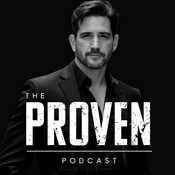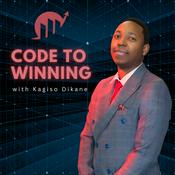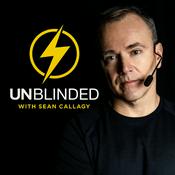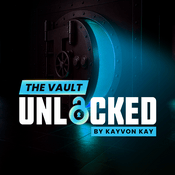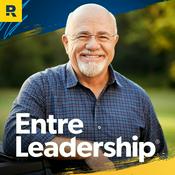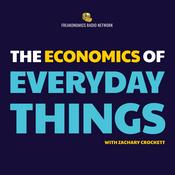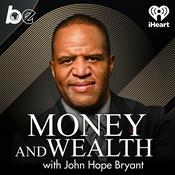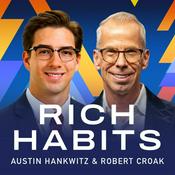384 episodes
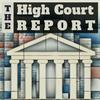
Throwback: Twitter, Inc. v. Taamneh | Algorithms, Aiding, Abetting, and Secondary Liability
12/22/2025 | 2h 29 mins.
This week, we'll air throwback episodes. Each episode will relate to the current cases.In this case, Twitter claimed that federal law shielded them from liability for terrorists who used their platform for terrorist acts. I chose this case because it relates to arguments that Cox raised in Cox v. Sony Music Entertainment. In Cox, Cox argued that this case, Twitter v. Taamneh, created heightened proof necessary to establish liability for its' users actions.Here's the story of Twitter v. Taamneh:Families of victims killed in a 2017 ISIS terrorist attack at the Reina nightclub in Istanbul sued Twitter, Facebook, and Google under federal anti-terrorism law, claiming these social media companies aided and abetted ISIS by allowing the terrorist group to use their platforms for recruitment, fundraising, and propaganda while profiting from advertisements placed on ISIS content. The plaintiffs argued that the companies' recommendation algorithms actively promoted ISIS content to users likely to engage with it, and that the companies failed to adequately remove ISIS-related accounts and content despite knowing about their presence. The Ninth Circuit allowed the lawsuit to proceed, but the social media companies appealed to the Supreme Court.The Supreme Court unanimously reversed, ruling that the plaintiffs failed to state a valid claim for aiding and abetting liability because the social media companies' general provision of platforms and passive failure to remove ISIS content did not constitute the "knowing and substantial assistance" required under federal law.The Court applied the Halberstam framework, which requires defendants to consciously participate in specific wrongful acts—meaning companies must actively help with particular terrorist attacks, not just allow terrorists to use their platforms like any other users. The Court distinguished between active misconduct (which creates liability) and passive failure to act (which generally does not), ruling that simply allowing ISIS to use social media platforms without special treatment amounts to passive inaction rather than culpable assistance. This decision protects communication providers from automatic liability for knowing that bad actors use their services, instead requiring evidence of intentional participation in specific terrorist acts.

Takeaways + Predictions | from Cases on Campaign Finance, Death Penalty IQ Tests, and Securities Suits
12/15/2025 | 19 mins.
OverviewThis episode delivers post-oral argument analysis and predictions for three major Supreme Court cases heard during the December 2025 argument session. We break down the key exchanges, judicial fault lines, and likely outcomes in National Republican Senatorial Committee v. FEC (campaign finance limits), Hamm v. Smith (intellectual disability determinations in death penalty cases), and FS Credit v. Saba (implied private rights of action in securities law).NRSC v. FEC: Campaign Finance Revolution• JD Vance standing issues and Article III requirements• Chief Justice Roberts challenges coordinated expenditure "fictions"• Justice Kagan's systematic dismantling of Republican arguments• Super PAC dominance versus party strength dynamics• Justice Alito's revealing "who benefits" questionHamm v. Smith: Life-or-Death IQ Determinations• Joseph Smith's brutal 1997 murder and five IQ test scores (75, 74, 72, 78, 74)• Alabama's collective scoring approach versus federal holistic evaluation• Chief Justice Roberts' "results-oriented" methodology critique• Justice Jackson's clinical expertise emphasis• Solicitor General's compromise "circle back" approachFS Credit v. Saba: Securities Law Private Enforcement• Activist investor challenges to fund management poison pills• Justice Kavanaugh as potential swing vote on "anomalous" state court outcomes• Legislative history debate between Sotomayor and textualists• Justice Gorsuch's separation of powers concerns• Practical implications for investment fund governanceEpisode HighlightsCampaign Finance Revelations:• Chief Justice Roberts: "I don't know in substance what the difference is" between coordinated expenditures and direct contributions• Justice Kagan's methodical exposure of existing circumvention loopholes• Republican counsel's admission about partisan fundraising advantagesDeath Penalty Constitutional Stakes:• Chief Justice Roberts challenging Alabama's statistical consistency• Justice Jackson emphasizing clinical complexity over mechanical score-counting• Three-way methodological split among Alabama, Smith, and federal governmentSecurities Law Enforcement:• Justice Kavanaugh's practical concerns about "very bizarre" state court relegation• Paul Clement's "nugatory statute" argument about defensive-only interpretation• Justice Gorsuch's emphasis on separation of powers in implied rights creationHost Predictions:• NRSC wins 6-3 (Thomas, Alito, Kavanaugh plus Roberts, Barrett, Gorsuch)• Hamm adopts Solicitor General's compromise approach• Saba wins 5-4 with Justice Barrett as deciding vote

Oral Argument: FS Credit v. Saba | Fund Feud: Forcing Fiduciary Fairness Through Federal Lawsuits
12/10/2025 | 1h 20 mins.
FS Credit v. Saba | Fund Feud: Forcing Fiduciary Fairness Through Federal Lawsuits | Argument Date: 12/10/25 | Docket Link: HereQuestion Presented: Whether Section 47(b) of the Investment Company Act of 1940 gives private plaintiffs a federal cause of action to seek rescission of contracts that allegedly violate the Act.OverviewThe Supreme Court will decide whether activist investors can sue investment funds directly in federal court when funds adopt governance provisions that allegedly violate federal securities law. Four closed-end funds adopted Maryland Control Share Acquisition Act provisions to strip voting rights from shareholders acquiring more than 10% ownership, prompting Saba Capital to seek rescission under Section 47(b) of the Investment Company Act. The case creates a fundamental clash over private enforcement of securities laws versus exclusive SEC regulatory authority, with implications for millions of Americans who invest in mutual funds and closed-end funds.Question Presented:Oral Advocates:For Petitioner (FS Credit) and Respondents (BlackRock): Shay Dvoretzky, Washington, D.C. United States as Amicus Curiae in Support of Petitioners: Max E. Schulman, Assistant to the Solicitor General, Department of JusticeFor Respondent: Paul D. Clement, Alexandria, VALink to Opinion: TBD.Website Link to Opinion Summary: TBD. Website Link to Oral Argument: TBD. Timestamps: [00:00:00] Oral Argument Preview[00:01:23] Oral Argument Begins[00:01:36] Petitioner Opening Statement[00:03:40] Petitioner Free for All Questions[00:19:29] Petitioner Round Robin Questions[00:30:53] United States as Amicus Curiae Opening Statement[00:32:17] United States Free for All Questions[00:42:11] United States Round Robin Questions[00:46:27] Respondent Opening Statement[00:48:55] Respondent Free for All Questions[01:16:48] Respondent Round Robin Questions[01:16:58] Petitioner Rebuttal

Oral Argument: Hamm v. Smith | IQ Score Showdown
12/10/2025 | 2h 3 mins.
Hamm v. Smith | Case No. 24-872 | Oral Argument Date: 12/10/25 | Docket Link: HereQuestion Presented: When someone takes multiple IQ tests to prove intellectual disability in a capital case, do courts look at all the scores together, or can one low score alone save their life?OverviewThe Supreme Court will decide whether courts must evaluate multiple IQ scores collectively or whether a single qualifying score triggers constitutional protection in death penalty cases. This decision affects hundreds of current death row inmates and reshapes capital litigation nationwide.Oral Advocates:For Petitioner (Hamm): Robert M. Overing, Principal Deputy Solicitor General, Montgomery, Alabama argued for Petitioner Hamm. United States as Amicus Curaie in Support of Petitioner: Harry Graver, Assistant to the Solicitor General, Department of Justice. For Respondent (Smith): Seth P. Waxman, Washington, D.C.Link to Opinion: TBD.Website Link to Opinion Summary: TBD. Website Link to Oral Argument: TBD. Timestamps: [00:00:00] Oral Argument Preview[00:01:28] Oral Argument Begins[00:01:43] Petitioner Opening Statement[00:03:58] Petitioner Free for All Questions[00:20:43] Petitioner Round Robin Questions[00:44:36] United States as Amicus Curiae Opening Statement[00:45:47] United States Free for All Questions[00:55:27] United States Round Robin Questions[01:21:13] Respondent Opening Statement[01:24:00] Respondent Free for All Questions[01:51:28] Respondent Round Robin Questions[02:01:18] Petitioner Rebuttal

Six Pack of Takeaways + Prediction: Trump v. Slaughter
12/09/2025 | 8 mins.
Summary:Analysis of the December 8, 2025 Supreme Court oral arguments in Trump v. Slaughter, examining how the justices signaled their likely approach to presidential removal power and independent agencies.Key Topics Covered:1. Chief Justice Roberts' Strategic QuestioningFocused on workability and implementation detailsChallenged quality of precedents supporting Slaughter's positionUnusual volume of questions suggests engagement with Trump's arguments2. Justice Sotomayor's Stare Decisis DefenseMounted strongest defense of Humphrey's Executor (1935)Emphasized 90-year precedential historyQuestioned Court's willingness to overturn longstanding constitutional precedent3. Predicted 6-3 Ruling for TrumpCourt's emergency docket orders already revealed likely outcomeThree-step analysis: presidential removal power + FTC executive authority + distinguish/overrule Humphrey's4. Competing Predictions About ImpactSlaughter's team: regulatory chaos, undermined business planningTrump's team: "sky did not fall" in previous agency restructurings5. The "Faithful Execution" ThreadJustice Gorsuch's devastating questioning about Take Care ClauseExposed contradiction in Slaughter's constitutional theory"Ruinous fines" vs. misdemeanor enforcement distinction crumbles6. The Defense Department ProblemCongress could restructure Cabinet departments as protected commissionsSlaughter's logic threatens executive unity across governmentNo limiting principle to prevent wholesale agency insulationBonus: Trump v. United States Framework"Conclusive and preclusive" authority test from immunity caseBoth sides weaponized language for removal power debateConstitutional framework that shaped entire argumentNext Episode: Analysis of post-argument developments and decision timeline
More Business podcasts
Trending Business podcasts
About The High Court Report
Listen to The High Court Report, Proven Podcast and many other podcasts from around the world with the radio.net app

Get the free radio.net app
- Stations and podcasts to bookmark
- Stream via Wi-Fi or Bluetooth
- Supports Carplay & Android Auto
- Many other app features
Get the free radio.net app
- Stations and podcasts to bookmark
- Stream via Wi-Fi or Bluetooth
- Supports Carplay & Android Auto
- Many other app features


The High Court Report
download the app,
start listening.
